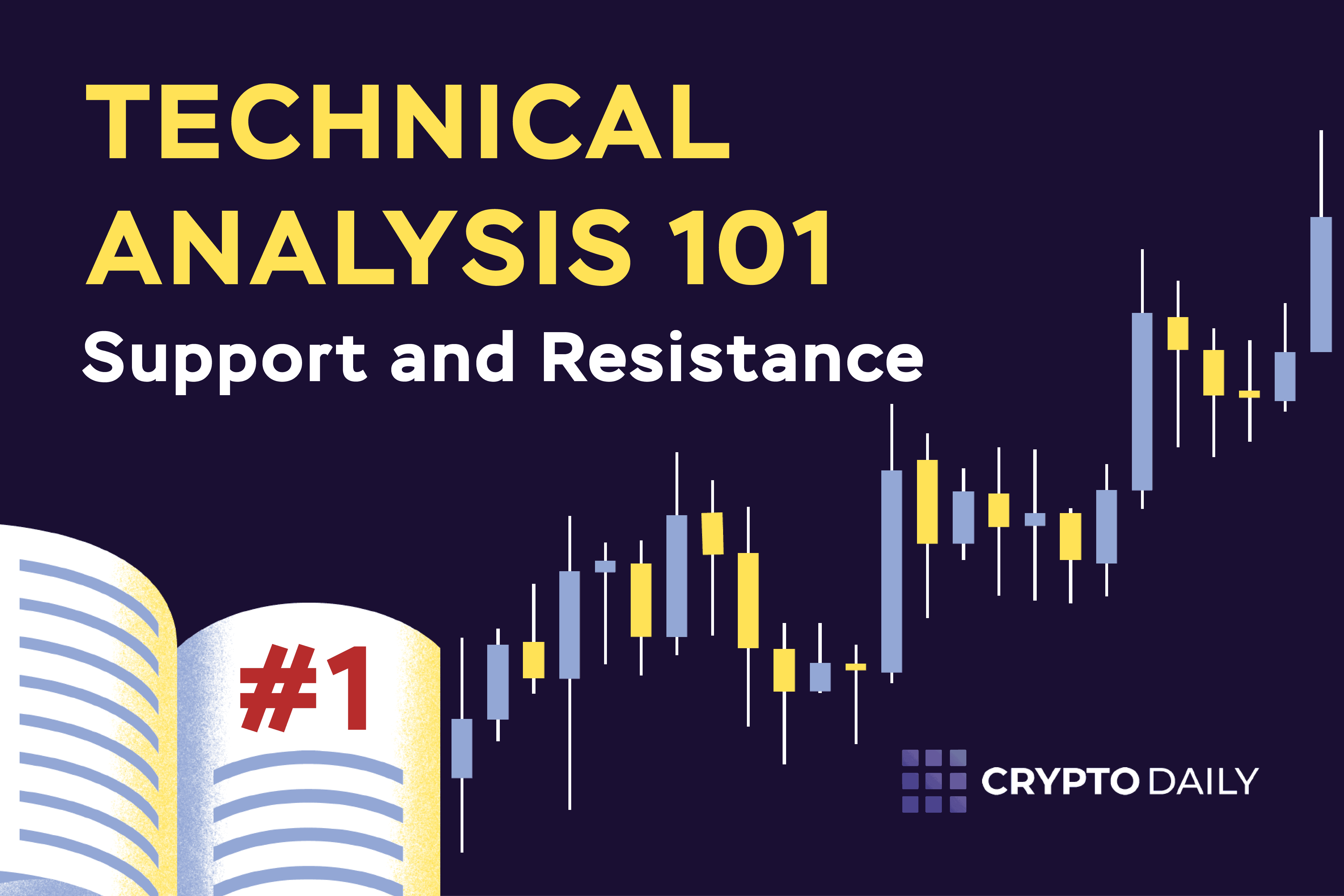Introduction
Support and resistance are two of the most basic concepts of technical analysis in financial markets. These terms are applied to any market, including stocks, forex, gold or cryptocurrencies.
At first glance, support and resistance may seem easy to understand, however, as you read more, you will find out that these levels may take different forms under different market conditions and you will have to study a lot of charts to master them. In today’s article, we will dive into the basics of support and resistance so that you can get an overall idea about these concepts.
Support and Resistance Definition
Support and resistance levels are points where the price is unable to break through, which acts as a type of barrier. With support, it’s a floor underneath the price which is held several times. In other words, the price has gone down and bounced off that level lots of times. While in the case of resistance, the price finds a ceiling. You just can simply note that support happens when there’s a concentration of demand, while resistance happens when there’s a concentration of supply.
While support and resistance are traditionally represented by lines, real-world situations are rarely this exact. You should keep in mind that the markets aren’t governed by any physical laws that prevent them from breaking through a certain level. That’s the reason why it is more useful to interpret support and resistance as areas. These areas are the ones that will drive activity from traders.
Let’s take a closer look at support through an example below.
In the morning, the price goes down to $50.00, then moves down to $49.90 before moving higher. At the end of the day, the price reaches $49.95 before going back up to close at $51. We can see that there are 3 support levels created, which together form a support area. Support areas are considered significantly more important than a single level since it indicates that the market tried to breach the region many times but failed. In this example, the support area ranges from $49.90 to $50.00.
An example of a support area is depicted in the figure below. We can see that the price tends to bounce off a similar region on a regular basis. That’s the support area since it indicates that buyers are willing to come in (or sellers are willing to back off) at that price point, causing the price to rise again.
Now, let’s look at an example of resistance.
If a cryptocurrency increases to $100 then decreases, increases to $100.50 and decreases, increases to $100.40 and decreases again, we will know that $100 to $100.50 is the resistance area. In the graph below, resistance levels form an area where a rally runs out of steam.
Read more: What is Price Action Trading?
How to use support and resistance levels?
Resistance and support levels are considered dynamic, which means that the price may break the old support/resistance level before reversing course in a short period of time. The new price is a new support/resistance level and can be used in conjunction with previous support/resistance levels in the same area to form a support/resistance area.
Market psychology plays a vital role in creating support and resistance levels. Market participants will remember the previous price levels that witnessed increased interest and trading activity. There are situations that many traders may mark the same levels, which bring increased liquidity. As a result, the support and resistance areas are frequently used by huge traders (also known as whales) to join or exit positions.
Generally, support and resistance are used for both trading and analysis.
During an uptrend, traders want to buy at a price level close to a support area since it is highly likely to go up. Therefore, if you can buy near a support area during an uptrend, it’s a good entry point.
Another important thing to consider is how these levels may react to changes in context. When an area of support is broken, it may turn into an area of resistance. Or, when a resistance level is broken, it can subsequently be retested and turned into a support level afterwards. A support-resistance flip is a term used to describe these patterns. Some people make the mistake of assuming that they should go short when the price falls below a support level. However, it depends on the context. During an uptrend, the drop of price below support level doesn’t mean that a short trade should be placed. It just indicates that the price is beginning to fall further. Taking trades by entering near the support area is preferable to taking short trades during uptrends even if support breaks.
During a downtrend, buying at support areas is not recommended since the price tends to drop further. Instead, you should go for a short near resistance area. Even if the price breaks through resistance, remember to favor short trades as long as the downtrend still takes place.
Support and resistance are also used in analysis. A failure of the rise in support and resistance during an uptrend doesn’t mean the trend is over, but it may signal that it is in peril. During this time, traders should avoid going long as well as short until a downtrend is clearly visible. When this situation happens, it simply tells us that we should sit down, wait and avoid taking trades. You should do the same during a downtrend when support and resistance levels fail to occur at lower price areas. All in all, when the trend is in doubt, you shouldn’t trade at support and resistance levels and wait until the trend is clear.
Support and Resistance Breakouts & False Breakouts
Support or resistance breakouts happen if the price passes through a support/resistance area, it’s called a breakout. For example, if the price of a cryptocurrency has frequently gone up to $100 but has been unable to break above that level, $100 is a resistance level. A breakout will occur when the price ultimately swings above $100. On the other hand, if the price reaches a resistance or support level but can’t break through, we call it a test (the level was tested).
A false breakout occurs when the price moves swiftly back to the support/resistance zone it just broke out of. For example, if a cryptocurrency moves over the resistance at $100, that’s called a breakout. However, if the price falls back below $100 shortly after and continues to decrease, we call it a false breakout.
Final Word
Support and resistance levels are the most fundamental terms which underpins a wide range of technical analysis techniques. A support level, which can be thought of as the floor underneath trading prices, and a resistance level, which can be looked at as the ceiling, are the basics of support and resistance. Traders and investors can use support and resistance to take actions corresponding to the market trend and context.



![The Complete Guide to Add Bitcoin to MetaMask Wallet ([currentyear]) 8 Add Bitcoin To Metamask Featured Image](https://coinwire.com/wp-content/uploads/2023/05/add-bitcoin-to-metamask-1024x683.jpg)
![Binance Futures Quiz Answers (Updated in [currentmonth] [currentyear]) 9 Binance Futures Quiz Answers Featured Image](https://coinwire.com/wp-content/uploads/2022/12/binance-futures-quiz-answers-1024x683.png)
![Buy Bitcoin with Apple Pay No Verification in [currentyear] 10 Buy Bitcoin With Apple Pay No Verification](https://coinwire.com/wp-content/uploads/2024/01/buy-bitcoin-with-apple-pay-no-verification-1024x683.jpg)
![How to Convert BEP20 to ERC20 Tokens Guide in [currentyear] 11 How To Convert Bep20 To Erc20 Token](https://coinwire.com/wp-content/uploads/2023/09/bep20-to-erc20-1024x683.jpg)
